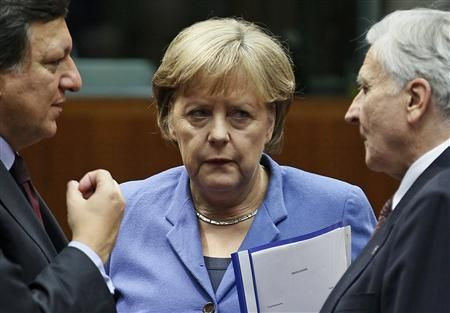Euro Crisis 2011: ‘Climbing the Wall of Worry’

The latest on the euro crisis of 2011 is that Eurozone leaders are “nearing agreement” on bank recapitalization and leveraging the bailout fund EFSF, reported Reuters.
A definitive conclusion, however, will not be reached until a second meeting on Wednesday.
Global markets are mixed about this progress-but-no-solution situation. At 9:23 a.m. ET, futures on the S&P 500 Index are up 0.06 percent and futures on the Dow Jones Industrial Average are up 0.20 percent.
The euro, however, is down against the U.S. dollar.
In the past three weeks, global risk assets have generally rallied on tidbits of hopes regarding a Eurozone bailout.
However, despite the obviously bullish trend of the market, the investor community remains decidedly bearish, said Brad Bechtel, managing director at Faros Trading. Indeed, numerous analysts continually voiced their doubts on the euro crisis throughout this period.
Bechtel thinks we are in a “climb the wall of worry market,” similar to the one in 2009 after the U.S. TARP bailout was put in place.
In these types of markets, worried investors continued to sell risk assets “on every rally only to be squeezed out.”
In 2009, it was clearly evident that the U.S. economy and financial system still had big problems despite TARP. The S&P 500, however, is now 85 percent above its March 2009 low.
Similarly, Bechtel and his colleagues at Faros think Europe will come through with a solution to prevent a meltdown. It may not be perfect, but it could be good enough to take risk assets another leg higher.
© Copyright IBTimes 2025. All rights reserved.





















